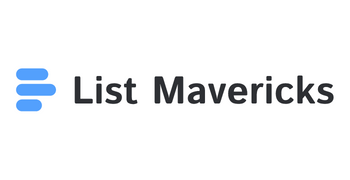Outbound marketing lead generation is a proactive way organizations reach out to potential customers who may not know about their products or services yet. By contacting prospects directly through channels like email, phone calls, and online ads, businesses can quickly start conversations and create new sales opportunities. This approach stands apart from waiting for customers to discover a brand on their own.
Companies use outbound lead generation to grow their pipeline and drive revenue. Strategies can include targeted advertising, cold calling, and using outbound tools that help find and engage leads. When done well, outbound marketing gives organizations a way to build awareness and connect with people who fit their ideal customer profile but might not have been reached otherwise.
Key Takeaways
- Outbound lead generation targets new customers through direct outreach.
- Successful strategies require the right mix of channels, tools, and personalization.
- Measuring results helps companies improve and scale their outbound efforts.
Understanding Outbound Marketing Lead Generation

Outbound marketing lead generation helps businesses find new customers by reaching out directly to potential prospects. It uses targeted campaigns and proven strategies to boost the number of leads and increase sales opportunities.
Key Concepts and Definitions
Outbound lead generation means a business actively contacts potential customers. It usually involves cold calling, direct emails, social media messaging, or other direct outreach methods. This is a form of push marketing, where the message is sent out to people even if they have not shown interest yet.
Outbound marketing is different from inbound marketing. Outbound strategies are often data-driven, using tools and research to find and reach the right prospects. Lead generation in this context is about gathering contact information and building connections, not waiting for customers to approach the business.
A successful outbound approach depends on clear target audience criteria, well-crafted messages, and tracking results. Common tools include customer databases, automated email software, and lead enrichment platforms. Email marketing and cold calls are widely used for their directness and speed.
Outbound vs. Inbound Lead Generation
Outbound and inbound lead generation work differently. Outbound lead generation is when a business initiates contact with new people, often using phone, email, or social ads. This lets companies reach prospects who might not know about their products yet.
Inbound lead generation (or pull marketing) attracts potential customers by offering content, resources, or helpful information. People come to the business because they are interested. Examples include blog posts, SEO, and webinars.
Outbound tends to deliver results quickly because it goes straight to the target audience. Inbound often takes longer to build momentum since it relies on organic search or word of mouth. Both outbound and inbound can be used together for better results. More details about these differences can be found in this guide.
The Role of Outbound Lead Generation in Business Growth
Outbound lead generation plays a direct role in increasing a company’s sales pipeline. By reaching out to specific segments, it uncovers new business opportunities and helps fill the gap when inbound channels are slow.
This method helps companies control their growth by targeting accounts that match their ideal customer profile. Outreach can be scaled up or down as needed, making it a flexible choice for changing market conditions. Outbound strategies can be carefully measured, allowing teams to optimize their approach as results are tracked.
Using outbound methods is especially helpful for businesses entering new markets or launching new products. When immediate results are required, or when a business wants to speed up lead generation, outbound marketing becomes the main driver of pipeline and revenue growth. More about business growth through outbound lead gen can be found at Kaspr’s outbound lead generation strategies.
Core Outbound Lead Generation Strategies

To generate quality leads through outbound marketing, companies need well-planned tactics. Personalization, persistence, and targeting play vital roles in how sales teams reach out and connect with potential customers.
Cold Emailing and Outreach
Cold email campaigns are a staple of outbound email lead generation. These emails target specific prospects who may not be familiar with the brand. Success starts with a personalized approach—using the recipient’s name, company, and highlighting a pain point in the first few lines. Prospects are more likely to respond when cold emails are relevant and concise.
Effective email outreach involves clear subject lines and a short, direct pitch. Teams often use sequences, sending follow-ups if there’s no response. Tracking open and click rates helps refine messaging over time. Multi-channel outreach can combine email with LinkedIn or other platforms for better engagement.
Key practices:
- Write personalized messages, not generic templates
- Address real business challenges
- End with a simple call-to-action
- Automate campaigns without sacrificing authenticity
When crafted well, outbound email strategies can boost conversions and identify sales qualified leads, even for brands with little recognition. Learn more ideas on building strong outbound lead generation strategies for 2025.
Cold Calling Techniques
Cold calling remains an effective outreach channel for outbound marketing. It involves directly contacting prospects by phone, even if they have never interacted with the company before. Preparation is essential: sales reps research leads and use scripts tailored to the audience.
A strong introduction, explaining the reason for the call in less than 30 seconds, is crucial. Quick information gathering, like identifying the person’s needs or challenges, sets up a solid pitch. Addressing objections with facts or examples increases trust.
Consistency matters with cold calling. Following up after the initial contact and improving each approach based on feedback can help turn potential leads into sales qualified leads. For more insights, see how outbound lead generation teams define and approach their roles.
Direct Mail Campaigns
Personalized direct mail stands out because it is less crowded than digital channels. Companies send letters, brochures, or small branded items to introduce their solutions or products. Well-designed direct mail with the recipient’s name and relevant offers increases open rates and responses.
A good direct mail campaign often uses a clear message and drives action, such as visiting a website or scheduling a meeting. Pairing direct mail with email or phone follow-ups creates a multi-channel outreach strategy that reinforces the pitch and boosts results.
Companies track responses using unique codes or landing pages, measuring success and optimizing future campaigns. For more tips on using direct mail and other traditional methods in outbound lead generation, review these 2025 outbound strategies.
Digital Outbound Channels and Tools

Businesses use digital channels and tools to connect with their audience, manage leads, and measure success. Strategies like using LinkedIn for outreach, launching pay-per-click campaigns, and leveraging CRM systems are key in digital outbound lead generation.
Social Selling and LinkedIn Outreach
Social selling focuses on building relationships and trust through platforms like LinkedIn. Sales professionals engage with prospects by sharing content, commenting on posts, and making personalized connections. Effective LinkedIn outreach uses direct messages, thoughtful connections, and targeted communication.
Key benefits include:
- Access to thousands of decision-makers
- Advanced search filters for finding leads
- Integration with other digital marketing tools
LinkedIn is popular for business-to-business (B2B) outreach because it provides in-depth company and contact information. Social media engagement is essential for keeping connections active and increasing brand visibility. Consistent interaction can boost response rates and help build a network of warm leads.
Paid Advertising and Pay-Per-Click
Paid advertising, such as pay-per-click (PPC) campaigns, drives targeted traffic quickly. Platforms like Google Ads, LinkedIn Ads, and Facebook allow precise audience targeting based on location, industry, job title, and interests.
Advantages of PPC include fast lead generation and detailed analytics. Advertisers can:
- Test various creative messages
- Adjust bids and budgets instantly
- Measure campaign performance in real-time
Using PPC, businesses can attract individuals who are searching for their services but have never interacted with the brand. Combining PPC with other outbound marketing strategies increases the chances of reaching interested prospects and capturing quality leads.
Leveraging CRM and Sales Intelligence
Customer Relationship Management (CRM) tools organize, track, and automate outbound lead generation. Sales intelligence software provides real-time data, including recent activity, contact details, and buying signals.
Main features of top CRM systems:
- Centralized lead database
- Automated follow-up reminders
- Integration with email and social media
Sales intelligence tools can provide verified B2B data to help sales teams focus efforts where there is real potential. They can segment audiences and prioritize outreach, making outbound campaigns more effective. These digital solutions support multi-channel approaches and create actionable insights for teams.
Optimizing the Outbound Sales Process

Effective outbound sales relies on targeting the right buyers, understanding their needs, and handling objections efficiently. Sales teams need structured processes to move leads smoothly through the sales funnel and convert them into clients.
Qualification and Ideal Customer Profiles
Setting up a strong qualification process is essential for a successful sales pipeline. Teams should define their ideal customer profile (ICP) using demographic, industry, and behavioral data. This helps prioritize leads that fit the company’s offerings.
Tools like buyer personas can help sales reps understand a lead’s needs, budget, and decision-making power. By focusing on high-potential prospects, teams avoid wasting time on leads that will likely drop out of the sales cycle. Detailed ICPs support better targeting, which improves the efficiency of both the sales team and marketing efforts.
A clear qualification method often includes a checklist or scoring method based on key factors:
| Criteria | Example Values |
|---|---|
| Industry | SaaS, Healthcare, Retail |
| Company Size | 50-200 Employees, SMB, Enterprise |
| Budget Range | $10k-$50k per year |
| Decision Maker | CMO, CTO, Owner |
This data-driven approach creates a more predictable pipeline and increases the chance of successful closes.
Sales Discovery and Lead Scoring
Sales discovery is the process where reps learn about a lead’s pain points, goals, and buying journey. It often includes a mix of open-ended questions and research to understand where a lead sits within the sales funnel.
Accurate information lets teams map out the next steps and anticipate challenges. Using lead scoring, reps assign point values to certain actions or characteristics, like attending a demo or downloading a whitepaper.
Lead scoring helps rank prospects so teams can focus on those who are ready to progress through the sales cycle. Common scoring factors include company size, engagement with marketing material, and previous buying behavior. Tracking these key performance indicators (KPIs) ensures the pipeline remains healthy and productive. For more about strategic lead scoring, visit this detailed guide on outbound lead generation.
Objection Handling and Closing
Handling objections is a critical step in moving leads closer to becoming clients. Salespeople should listen closely to concerns and use facts, testimonials, or product demonstrations to address doubts. Successful reps treat objections as opportunities to strengthen client relationships.
Typical objections might include price, product fit, or contract terms. Addressing these promptly with tailored solutions keeps the sales cycle moving smoothly. Clear communication and follow-up build trust.
The closing stage involves summarizing agreed terms and confirming next steps. Skilled negotiation, a solid understanding of the client’s needs, and strong follow-through are key. Well-managed closings can turn prospects into long-term customers and provide a foundation for future deals.
Personalization and Lead Nurturing Tactics

Successful outbound marketing lead generation depends on tailoring contact to each prospect and carefully moving them through the sales process. Combining personalization with ongoing communication helps increase trust and improves conversion rates throughout the funnel.
Personalized Outreach Methods
Modern lead generation relies on direct, personal contact with prospects. Sales teams achieve this by using names, job titles, and industry-specific details in emails and calls. Personalized messages show research and effort, which increases the chance of a response.
Using account-based marketing (ABM) is common for B2B outreach. ABM lets teams focus their messages and offers on decision-makers at target companies. This helps create relevance and strengthens relationships. Personalization is also possible through social media, with targeted LinkedIn messages and genuine networking.
Automated tools can help with data collection, but human input is needed for true customization. Sharing industry insights or tailored product demos also adds value. Marketers see the best results when every message feels unique and relevant to the recipient, as shown in recent outbound lead generation strategies.
Follow Up Sequences
Timely and consistent follow-up is essential for converting leads. The best follow-up sequences use a mix of email, phone calls, and sometimes social messages to stay top of mind.
Email marketing tools help schedule and track follow-up messages, letting teams measure which messages work best. An effective sequence may start with a brief introduction, followed by value-focused offers or case studies, and then a direct call to action.
Spacing messages a few days apart keeps prospects engaged without overwhelming them. Using the recipient’s name and specific details in every follow-up increases connection. If a response or interest is shown, the sequence can be adjusted to focus on the lead’s unique needs. Including referrals or mentioning mutual connections can also boost response rates.
Lead Nurturing Strategies
Lead nurturing strategies focus on building trust and keeping leads interested over time. This is often done through regular newsletters, educational content, or updates about products and services.
Segmenting leads by interest or stage in the buying journey allows for more personal communication. Sending targeted information helps leads feel understood and valued. Providing relevant case studies, testimonials, or industry news addresses objections and builds the buyer’s confidence.
Referral marketing can also play a role, with companies encouraging happy customers to refer new leads. Networking, both online and at events, keeps relationships strong even if a sale doesn’t happen right away. AI-driven automation tools now help score and prioritize leads, making nurturing both efficient and effective.
Measuring and Scaling Outbound Lead Generation

Measuring outbound lead generation depends on clear performance indicators and efficient processes. Scaling these efforts uses automation and smart distribution like content syndication for steady growth and higher brand awareness.
Tracking Key Performance Indicators
Key Performance Indicators (KPIs) give teams a clear picture of what works and where there are gaps. Common KPIs in outbound lead generation include:
- Number of leads contacted
- Qualified leads generated
- Response rate
- Conversion rate
- Cost per lead
Tracking these metrics helps organizations refine their lead generation strategies and improve their return on investment. Identifying which lead generation techniques result in more B2B leads or better-quality conversations is critical for refining sales outreach and marketing efforts.
Focusing on lead quality rather than just volume improves sales outcomes. Monitoring KPIs is especially useful for B2B companies that need to identify the most effective channels—such as cold emails, LinkedIn outreach, or participation in online communities. Reliable measurement enables teams to make data-driven decisions and optimize their marketing plans for maximum impact. For a detailed look at important outbound KPIs, see this explanation of essential lead generation KPIs.
Scaling with Automation and Content Syndication
Growth depends on reaching more prospects in less time. Automation platforms can streamline repetitive tasks, such as scheduling and sending follow-up emails or managing lists. This lets teams focus on engaging high-potential leads and experimenting with new lead generation strategies.
Content syndication is another effective way to boost reach and build brand awareness. Sharing blog posts, whitepapers, or webinars on third-party sites gets content in front of prospects who might not find it otherwise. This is vital in B2B lead generation, where trust and visibility matter.
Combining automation with syndication helps teams easily expand their lead pool. It also supports content marketing goals, bringing company expertise into different online communities and boosting the chances of meaningful interactions. Using data from these campaigns helps organizations decide which topics, channels, or formats lead to better results. For more on how automation and syndication support outbound growth, check out these outbound lead generation strategies.
Frequently Asked Questions

Outbound marketing lead generation uses direct outreach to grow a business’s customer base. Successful approaches require clear tactics, the right tools, defined roles, careful tracking, and an understanding of how outbound compares to inbound.
What are effective strategies for outbound marketing lead generation?
Some of the most effective strategies use tailored outreach methods, such as cold calling, cold emailing, event networking, and pay-per-click advertising. Personalized messages tend to see higher response rates than generic ones. Multichannel outreach, where several methods are used together, can increase the chances of reaching new leads. Learn more about these methods in this 2025 guide to outbound lead generation.
Can you list the top tools for improving outbound lead generation?
Key tools include customer relationship management (CRM) software, sales automation platforms, and email tracking tools. Many businesses also use social media prospecting tools and lead data platforms that help identify and contact target prospects. Together, these resources help teams organize outreach and track lead progress.
What roles and responsibilities define an outbound lead generation job?
Typical roles focus on prospecting, contacting potential customers, and qualifying leads. Outbound sales representatives or specialists reach out to leads through calls and emails, set appointments, and follow up consistently. They record interactions, pass sales-ready leads to account executives, and may also analyze campaign results.
How do outbound lead generation companies measure success?
Common success metrics include the number of leads contacted, response rates, and conversion rates from leads to sales. Companies also measure the return on investment (ROI) for each campaign. Sales qualified leads (SQLs), not just marketing qualified leads (MQLs), are considered strong indicators of value. More insights on this are available at this FAQ page about outbound lead generation.
What are the differences between inbound and outbound lead generation techniques?
Outbound techniques focus on reaching out directly to prospects, while inbound relies on attracting leads through content or organic channels. Outbound is usually more proactive, while inbound is more passive, waiting for leads to express interest. Outbound often produces faster results, but inbound may build longer-term relationships.
How does outbound lead generation integrate with direct marketing efforts?
Outbound lead generation often overlaps with direct marketing, as both involve directly contacting prospects. Integrated campaigns might include direct mail and phone outreach, along with targeted emails or cold calls. This coordinated approach helps increase brand exposure and engagement across multiple channels. This process is further explained in this guide to outbound lead generation.

